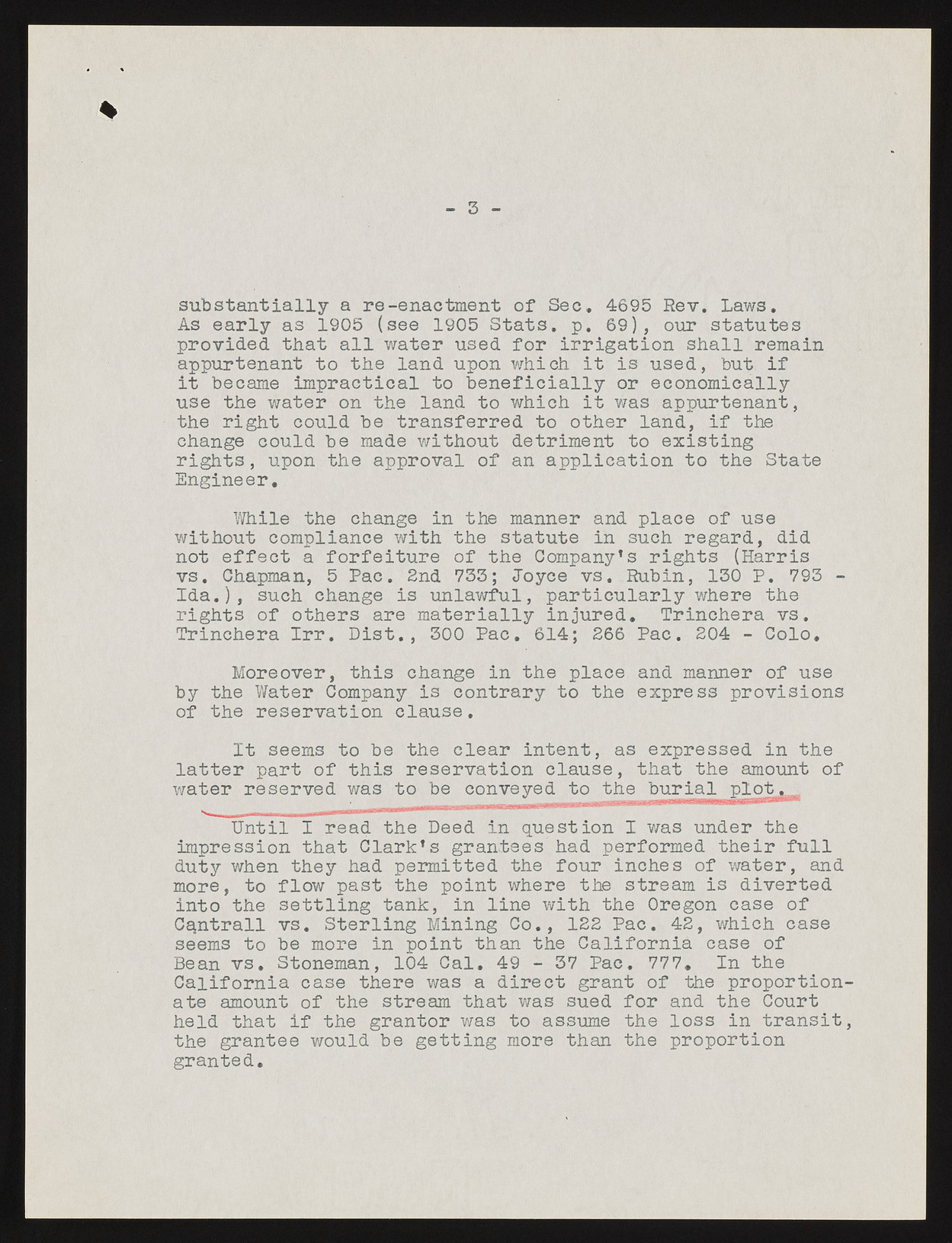Copyright & Fair-use Agreement
UNLV Special Collections provides copies of materials to facilitate private study, scholarship, or research. Material not in the public domain may be used according to fair use of copyrighted materials as defined by copyright law. Please cite us.
Please note that UNLV may not own the copyright to these materials and cannot provide permission to publish or distribute materials when UNLV is not the copyright holder. The user is solely responsible for determining the copyright status of materials and obtaining permission to use material from the copyright holder and for determining whether any permissions relating to any other rights are necessary for the intended use, and for obtaining all required permissions beyond that allowed by fair use.
Read more about our reproduction and use policy.
I agree.Information
Digital ID
Permalink
Details
Member of
More Info
Rights
Digital Provenance
Publisher
Transcription
% - 3 - substantially a re-enactment of Sec, 4695 Rev. Laws. As early as 1905 (see 1905 Stats, p. 69), our statutes provided that all water used for irrigation shall remain appurtenant to the land upon which it is used, but if it became impractical to beneficially or economically use the water on the land to which it was appurtenant, the right could be transferred to other land, if the change could be made without detriment to existing rights, upon the approval of an application to the State Engineer. While the change in the manner and place of use without compliance with the statute in such regard, did not effect a forfeiture of the Company’s rights (Harris vs. Chapman, 5 Pac. 2nd 733; Joyce vs, Rubin, 130 P. 793 - Ida.), such change is unlawful, particularly where the rights of others are materially injured. Trinchera vs. Trinchera Irr. Dist., 300 Pac. 614; 266 Pac. 204 - Colo. Moreover, this change in the place and manner of use by the V/ater Company is contrary to the express provisions of the reservation clause. It seems to be the clear intent, as expressed in the latter part of this reservation clause, that the amount of water reserved was to be conveyed . ........ , .htth— —t1—o the burial plot. Until I read the Deed in question I was under the impression that Clark’s grantees had performed their full duty when they had permitted the four inches of water, and more, to flow past the point where the stream is diverted into the settling tank, in line with the Oregon case of Cqntrall vs. Sterling Mining Co., 122 Pac. 42, which case seems to be more in point than the California case of Bean vs. Stoneman, 104 Cal. 49 - 37 Pac. 777. In the California case there was a direct grant of the proportionate amount of the stream that was sued for and the Court held that if the grantor was to assume the loss in transit, the grantee would be getting more than the proportion granted.

